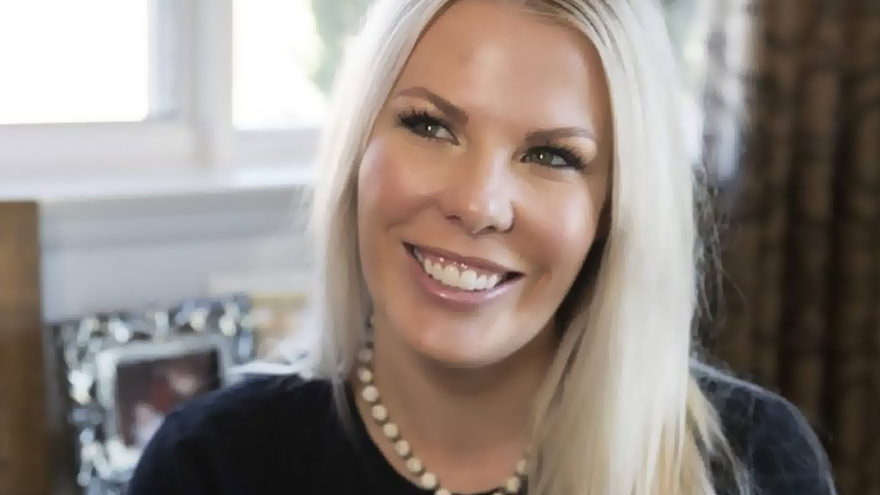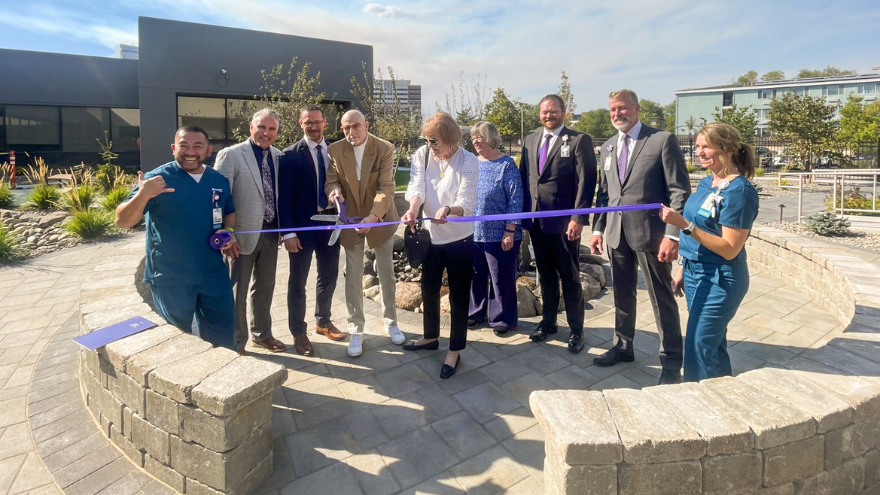Search
Results for 'doctor'
Clear-
7 Quick Ways to Keep Your Humidifier Bacteria-Free
Humidifiers are a great way to moisturize the air in your home as outside temperatures plummet, helping with chapped skin, allergies and cold and flu symptoms in children and adults. But without regular upkeep, humidifiers can breed dangerous mold and bacteria and do more harm than good. We’ve gathered some tips for keeping your humidifier — and your home — clean and bacteria-free. Dirty humidifier tanks can quickly breed bacteria and mold. This can be a problem for healthy people, but especially problematic for people with asthma and allergies when the contaminated mist or steam is released into the air. Here are some top ways to keep your humidifier humming and prevent unintended bacterial growth. Use distilled or demineralized water. Tap water contains mineral-creating deposits inside your humidifier that promote bacterial growth. These minerals often appear as white dust on your furniture. You may also breathe in some of these minerals. Distilled or demineralized water has a much lower mineral content compared with tap water. Instead of distilled water, you can also use demineralization cartridges or filters in your humidifier if they’re recommended by the manufacturer. Change the water often. Avoid letting water sit in the tank for long periods of time. This causes mineral deposits to collect on the bottom and sides of the tank. The longer the water sits, the more deposits will collect and the harder they’ll be to remove. Keep the area around the humidifier dry. If the area around your humidifier becomes too damp, turn it down. Surrounding the humidifier with dampness can lead to mold and bacterial growth. Change the filter in your central air conditioning and heating system regularly. Your humidifier is circulating more water in the existing air in your home. Optimize the cleanliness of your humidifier by ensuring your general air quality is clean. Clean the humidifier regularly. When the humidifier is in heavy use during the winter or when a family member has a cold, clean it weekly with a simple vinegar or hydrogen peroxide rinse. Do a deep monthly clean of the tank, base and filter (or per your manufacturer’s instructions). Replace the humidifier when necessary. Old humidifiers may start to break down over time. The worn-out parts will be more prone to hosting bacterial growth. If you’ve had your humidifier for five years, you might want to consider replacing it. Humidifiers can build up difficult mineral deposits, which are impossible to remove and encourage bacterial growth. Store the humidifier properly. Before putting your humidifier in storage, clean it thoroughly. Throw away any temporary parts (such as used filters or water cartridges) and make sure it is completely dry. Rinse or clean it again before using it the next time. Order any new filters or cartridges you’ll need when you use it again and store them with the humidifier. With proper maintenance, a humidifier can be an affordable at-home method for fighting colds and flu, and for making indoor winter air more hospitable. If you have a humidifier built into your central heating and cooling system, consult the instruction manual or ask your heating and cooling specialist about proper upkeep. Learn more healthy living tips and sign up for wellness classes through Renown’s Health Improvement Programs.
Read More About 7 Quick Ways to Keep Your Humidifier Bacteria-Free
-
May is National Stroke Month: Know the Signs and B.E.F.A.S.T.
Every 40 seconds someone in the U.S. has a stroke, but 80 percent of all strokes are preventable. That’s why knowing the signs and symptoms and what to do is so important. With May being National Stroke Month, we asked Sadie Wangler, program manager with Renown Institute for Neurosciences, to explain more. We can prevent strokes by changing our lifestyle behaviors that increase our risk. Knowing the symptoms and being prepared to B.E. F.A.S.T. are key as well. We asked Sadie Wangler, program manager for the Renown Institute for Neurosciences, what everyone person should know about stroke. What is a stroke? A stroke can be caused by a blood clot within an artery in the brain or a blood vessel. The clot can burst due to blockage and this causes blood flow to the brain to be cut off. Without the proper bloodflow and oxygen getting to the brain, the brain’s tissue begins to die. How to spot symptoms of a stroke? The easiest thing is to remember the word “B.E.F.A.S.T.” B – Loss of balance: Ask the person to walk 5-10 feet, with light assistance, and ask if they felt dizzy or off balance. E – Double Vision or blurred vision: Ask the person if their vision has changed in any way. F – Look for face drooping: Ask the person to smile and see if one side of their face droops. A – Arm weakness: Ask the person to raise both arms. Does one arm drift downward? S – Speech difficulty: Ask the person to repeat something. Is their speech slurred or strange? T – Time to call 911: Time matters – so don’t wait to call an ambulance if you or a loved one is experiencing these symptoms. You can also watch for sudden numbness or weakness in the face, arm or leg, especially on just one side of the body. Look for any confusion — if they’re having trouble speaking or difficulty understanding others talk — and if they have trouble seeing in one or both eyes, trouble walking, dizziness, loss of balance, or sudden and unexplained severe headache. The signs of stroke happen suddenly and a lot of people may deny their symptoms, thinking they’re overreacting. But it’s critical to act quickly and get medical attention right away — when it comes to stroke and saving your brain, minutes matter. What should you do if you think you or someone you love is having a stroke? In addition to seeking help right away, it’s best to call 911 and get an ambulance. A lot of people make the mistake of driving themselves to the hospital or have someone else drive them, and this can be dangerous for a number of reasons. First of all, it can put you, your loved ones and others on the road in danger. Second, going to the hospital on your own can take more time than calling an ambulance, and when it comes to stroke, every minute of medical care counts. So it’s important to call 911 and get treatment immediately. What can you do to prevent stroke? A stroke can happen to anyone, but certain risk factors can increase your risk. There are some risk factors you can’t control: your age, family history, race and gender. Stroke risk is higher for women and people over the age of 55. Fortunately, there are some risk factors you can control, such as high blood pressure, smoking, artery or heart disease, high cholesterol, as well as obesity, poor diet and lack of exercise. A lifestyle focused on healthy diet and regular exercise can greatly reduce your risk for stroke. Quitting smoking and watching your alcohol intake can help too. The Renown Regional Medical Center has been certified as a Comprehensive Stroke Center by the Joint Commission and received the Gold Plus Achievement award by the American Stroke Association. Our Stroke Program provides evidence-based primary stroke care including evaluation, treatment and education to patients who arrive at a Renown facility with the signs and symptoms of stroke. Learn more online. Renown Institute for Neurosciences: 775-982-2970 The Renown Regional Medical Center Comprehensive Stroke Program provides evidence-based comprehensive stroke care including evaluation, treatment and education to patients who arrive at a Renown facility with the signs and symptoms of stroke. Learn more about treatment options for stroke and additional ways to reduce risk factors online. Learn More
Read More About May is National Stroke Month: Know the Signs and B.E.F.A.S.T.
-
Woman With Family History of Cancer Taking Action Today
With a family history of breast and other cancer, Aime′ Landaburu isn’t missing a single health screening. She recently had her first mammogram as well as a whole breast ultrasound, which detects 41 percent more cancers and reduces the number of false-positive results. Like many people, Aime′ Landaburu is busy juggling parenthood and a career. It would be easy to put health screenings on the back burner, but with a grandmother who has survived breast cancer three times and a grandmother who had ovarian cancer, Landaburu is addressing her family health history head-on. “I decided at 35 that I needed to get my screenings done because I have my family history of both grandmothers having had cancer,” Landaburu says. “In addition to the mammogram, I was really interested in doing the whole breast ultrasound. It is the same price as getting my hair done and it’s potentially something that could save my life.” Landaburu says the procedures were painless. “It was really comfortable, and the techs were all so nice and kind and gentle and explained things along the way.” Breast Screening Technology Provides Greater Insight George Krakora, MD, lead radiologist for Renown’s Breast Health Center, says the new 3D imaging for mammograms is picking up subtle cancers that would not have been seen with the previous 2D imaging. “It’s an additional tool that helps find those subtle cancers that may be missed in dense breasts,” Dr. Krakora says. With the whole breast ultrasound, the tech screens for masses — which are often obscured on the mammogram X-ray. Studies show it detects an additional 2 to 3 cancers per 1,000 women that would not have been detected with routine mammography. “Aime′ was noted to have heterogeneous dense breast tissue. That puts her at a little higher risk for cancer and also limits the sensitivity of mammography,” Dr. Krakora says. Multiple Ways to Screen for Breast Cancer However, Dr. Krakora notes, breast ultrasound is not a substitute for mammography, which can detect calcifications that can represent the earliest forms of cancer.” Surprisingly to Landaburu, her results came in just three days. “It’s so important to know what’s going on in your body. I was really nervous when I first got the paperwork, but ultimately it was negative, “ Landaburu says. “I’m thankful it was good and I have a baseline for the future.” Landaburu also advises other young women with a history of breast cancer to proactively communicate. She says it’s important to reach out to women they know who have survived breast cancer. “You have to take the first step and you want to be around for your kids and your family and yourself,” she says. “So utilize your resources, educate yourself and go get screened.” Breast Cancer Screening and Prevention Breast cancer begins when abnormal cells in the breast grow out of control. These cells form tumors that can grow into the surrounding tissue and spread to other parts of the body. Breast cancer occurs mostly in women, but men can also develop breast cancer. To schedule a mammogram or whole breast ultrasound, call 775-982-8100, or schedule an appointment online. Make an Appointment
Read More About Woman With Family History of Cancer Taking Action Today
-
A New Therapy Garden: Enhancing Recovery at Renown Rehabilitation Hospital
Last fall, Renown Rehabilitation Hospital unveiled the Rehabilitation Therapy Garden, supported by the Estelle J. Kelsey Foundation, a space designed to support rehabilitation patients on their path to recovery. Made possible through the generosity of donors, this innovative garden provides therapeutic tools to help individuals regain independence and improve their quality of life. "If a patient is recovering from a spinal cord injury, stroke, or brain injury, they might face challenges like stairs, ramps, and uneven surfaces for the first time. Without training, these obstacles can be hard to navigate. The Rehabilitation Therapy Garden gives patients and their families the chance to practice and gain the skills they need to move confidently in the community and become more independent,” said Shawn Morris, Renown Rehabilitation Hospital Director of Rehab Operations. One of the garden’s highlights is a wheelchair course with ramps of varying difficulty, allowing patients to practice navigating different terrains. This hands-on therapy is essential for those recovering from strokes, brain injuries, orthopedic injuries, or trauma. It builds strength, mobility, and confidence by simulating real-world challenges in a safe and supportive environment. “The garden is great, it’s all set up to practice things like stairs and ramps, plus it’s nice to look at,” said a patient at Renown Rehabilitation Hospital. Key Features of the Rehabilitation Therapy Garden: A wheelchair course to simulate diverse terrains that patients may encounter in the community. ADA-regulated ramp with bilateral railings, like those found in public spaces. Outdoor seating areas for therapeutic and recreational use. Raised garden beds for accessible gardening activities. Lush landscaping that promotes a calming atmosphere. Tools and stations designed for physical therapy exercises. A calming fountain that enhances the garden’s peaceful atmosphere, providing a soothing environment. A putting green that promotes balance and durability and is a patient favorite. Pathways for walking, offering a safe and scenic environment for patients to practice mobility. View photos of the Rehabilitation Therapy Garden here.
Read More About A New Therapy Garden: Enhancing Recovery at Renown Rehabilitation Hospital
-
Early Childhood Teacher - Per Diem
Per Diem - Non Benefited100718 Child Care CenterVaries -
Medical Assistant - Carson City
Full Time - Eligible for Benefits530268 Medical Group South Carson CityDay -
Manager of Sterile Processing
Full Time - Eligible for Benefits200227 Sterile ProcessingVaries -
MRI Technologist
Per Diem - Non Benefited209256 Imaging 75 Pringle MRIVaries -
Medical Staff Services Coordinator
Full Time - Eligible for Benefits200761 Medical Staff ServicesDay -
Manager of Nursing - NICU
Full Time - Eligible for Benefits200174 Neonatal Intensive Care S2Day -
Lead Clin Research Coord - COG
Full Time - Eligible for Benefits250701 AdministrationDay -
Neurodiagnostic Technician II
Full Time - Eligible for Benefits200296 ElectrodiagnosisDay



